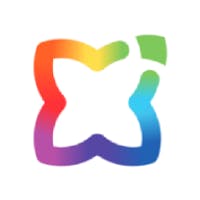In the ever-evolving landscape of education, the shift toward authentic assessments has gained momentum.
Traditional evaluation methods fall short in capturing the holistic growth of learners, favouring standardisation and rigour over a portrait which captures the nuances of learner growth, goal-setting and resilience.
We explore the significance of 360° learning assessments, delving into what they are, how they work and why they are a more authentic form of assessment.
Unlocking the Authenticity in Learning
In an educational landscape where learner-centric education is gaining momentum, empowering learners to actively engage with and, better yet, steer their own learning journey is paramount.
By placing learners at the helm of their own learning journey, 360° assessments achieve precisely this.
No longer passive recipients of feedback, learners become active participants in the process, architects of their own futures.
This shift from a teacher-dominated evaluation model to one where learners actively demonstrate their learning journey marks a seismic but profoundly necessary change.
At its core, a 360° learning assessment is a comprehensive approach to evaluating a learner's progress that involves diverse perspectives and offers a range of valuable feedback to the learner. It transcends the conventional unidirectional, teacher-centric evaluation by incorporating insights from learners themselves, learning guides, parents and the broader learning community.
How do they work?
Navigating the Learning Cycle
On the day of 360°s, the mentor and the learner will meet with the learner’s parents (or chosen audience), and the learner will present their achievements throughout the past cycle.
They will discuss their goals for the cycle and the work they did, showcase examples and discuss goals for the next cycle based on what they learned and accomplished.
Throughout the following cycle, learners engage in reflective practices and apply the feedback they received in their 360° assessment to adjust their course as they grow.
The experience is an adjustment for many learners unaccustomed to having to account for the work they did beyond a letter on paper. The process, especially as they are growing their autonomy skills, of having to account for, reflect on, and present their learning can be difficult for those doing a 360° for the first time, but the payoff is worth the struggle.
As Learning & Operations Champion Gaby Albano explains,
“The process can be challenging for some learners, but it's an vital learning experience that builds their confidence. A child may find their first 360 challenging, but after completing each one, you see incredible growth in the quality of what the learner produces and the way they express themselves."
Why do we do 360s at Learnlife?
Authenticity in Action
“The feeling after every single 360° that I had was amazing. I enjoyed my process, have people I love that I can share it with, and I’m excited to keep learning the next cycle. So, I think it’s the perfect transition between cycles to keep motivated and to reflect on your process.”
Benefits of 360° Assessments
- Enhanced Self-Reflection: The continuous reflection encouraged by 360° assessments cultivates self-awareness and metacognitive skills in learners.
- Collaborative Learning Culture: The involvement of various stakeholders promotes a collaborative community, enriching the overall learning experience.
- Individualised Purpose: Learners explore their 'why' during the learning cycle, aligning their education with personal passion and purpose.
- Holistic Skill Development: Beyond content knowledge, learners develop crucial skills like autonomy, self-efficacy, and the ability to navigate real-world scenarios.
360° learning assessments serve as a more authentic form of assessment than traditional exams or end-of-term reports.
By placing learners at the centre of their educational journey and involving a spectrum of perspectives, these assessments not only measure knowledge but also cultivate skills crucial for lifelong success.
Embracing the 360° approach is not just an assessment strategy. It's a commitment to nurturing holistic, empowered, and authentic learners, ready for the next step in their learning journey.


